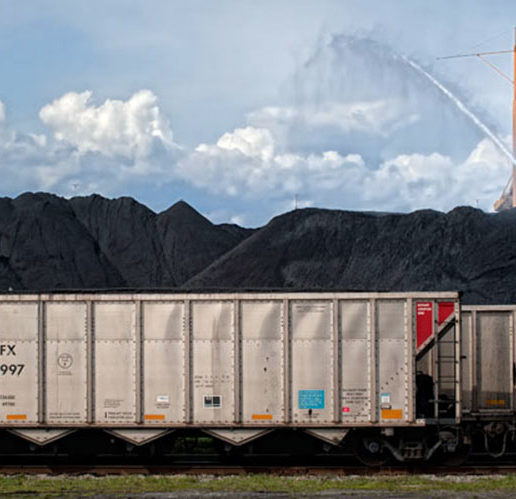Union activists have been tirelessly organizing with communities, recognizing that these are the same stories of communities across the United States. The fight will go on, even as disaster capitalism on steroids wants to destroy the public education system.
A high school teacher uses the #MeToo movement and students’ own experiences with apologies to interrogate the government’s 1993 apology to Native Hawaiians for the 1893 overthrow of the Kingdom of Hawai’i.
A high school teacher critiques the textbook treatment of the Cold War and U.S. imperialism. She describes her approach to the “curricular conundrum” that the Cold War presents because it lasted so long, and was so far-flung. “”If we are ever to create a different world, one in which the United States does not cast an outsized and militarized shadow across the globe, we need our students to understand how and why that shadow was created in the first place.”
An elementary school teacher uses his students’ T-shirts to launch a lesson about child labor, basic economics, factories, unions, and strikes. “When I was a child, I remember ‘playing pretend’ with my cousins. We could be anyone we imagined, and in that moment, we were those people. Why not use that energy and imagination as a resource? When we use our imagination to walk in another’s shoes, that’s where real learning begins.”
Puerto Rico’s teachers are resisting the onslaught of privatization efforts in the wake of Hurricane Maria.
Students analyze cartoons from Popeye to Brave to see how media teaches children white- and male-supremacist ideas.
A high school social studies teacher centers Standing Rock Sioux history and leadership in a unit on resistance to DAPL.
Two days after the election, 21 plaintiffs, aged 9 to 20, won a critical court ruling on the constitutional obligation of the U.S. government to protect our children’s right to […]
Sara Holbrook’s poems appear on the Texas STARR tests. Her efforts to answer the questions about her own poetry expose the narrowness of standardized testing.
On Sept. 20, 2015, thousands of Seattle Education Association (SEA) members voted to approve a new contract with the Seattle Public Schools. The vote officially ended the strike, which delayed […]
High school students play the Widget Boom Game to understand how overproduction and underconsumption helped cause the Great Depression.
A history teacher helps his students see the conservatism of the early New Deal and the impact of organizing and mass resistance.
An administrator describes the journey of her K-8 school as it welcomes a transgender 8th grader and the gender transition of another student.
Ninth graders explore a plan to strip-mine coal in Wyoming and Montana, send it by train to the Northwest, then ship it to Asia to be burned.
The historic destruction of the Chávez Ravine neighborhood in Los Angeles – to build Dodger Stadium – paves the way for students to understand changes in their own neighborhood. Second in a two-part series.
High school students embed themselves in a community’s history and people when they study the impact of “development” on historically African American Turkey Creek in Gulfport, Mississippi.
The rollout of the Common Core has seemed more like a marketing campaign than an educational plan. A look at the funders, origins, and uses of the new standards shows why the pushback is building.
Five years in the making, A People’s Curriculum for the Earth is a collection of articles, role plays, simulations, stories, poems, and graphics to help breathe life into teaching about the environmental crisis. The book features some of the best articles from Rethinking Schools magazine alongside classroom-friendly readings on climate change, energy, water, food, and pollutionÑas well as on people who are working to make things better. A People’s Curriculum for the Earth has the breadth and depth of Rethinking Globalization: Teaching for Justice in an Unjust World, one of the most popular books we’ve published.
At a time when it’s becoming increasingly obvious that life on Earth is at risk, here is a resource that helps students see what’s wrong and imagine solutions.
During his four years in office, President Trump pushed the United States closer toward war with Iran. After barely a month in office, President Joe Biden carried out airstrikes in […]

A People’s History for the Classroom helps teachers introduce students to a more accurate, complex, and engaging understanding of U.S. history than is found in traditional textbooks and curricula.
It includes a new introductory essay by veteran teacher Bill Bigelow on teaching strategies that align with Howard Zinn’s<em> A People’s History of the United States
These exemplary teaching articles and lesson plans — drawn from an assortment of Rethinking Schools publications — emphasize the role of working people, women, people of color, and organized social movements in shaping history, and raise important questions about patterns of wealth and power throughout U.S. history.
An understanding of the “people’s history of the United States” provides the perspective and analytical tools so important for making sense of Ñ and improving Ñ today’s world.
A People’s History for the Classroom was produced in cooperation with Teaching for Change, as part of the Zinn Education Project.
I can think of no better way to excite young people about the history of our country than to introduce them to the teaching activities in </em>A People’s History for the Classroom.”
-Howard Zinn, author of A People’s History of the United States
The Line Between Us explores the history of U.S-Mexican relations and the roots of Mexican immigration, all in the context of the global economy. And it shows how teachers can […]
This comprehensive 400-page book from Rethinking Schools helps teachers raise critical issues with students in grades 4-12 about the increasing globalization of the world’s economies and infrastructures, and the many […]


















